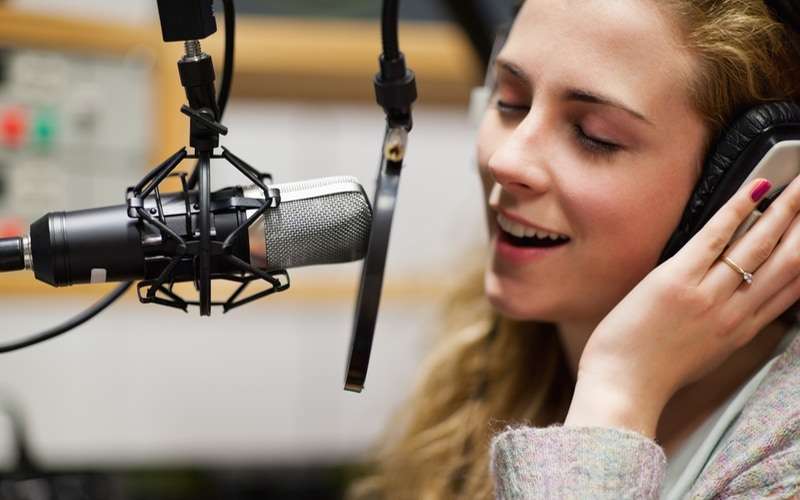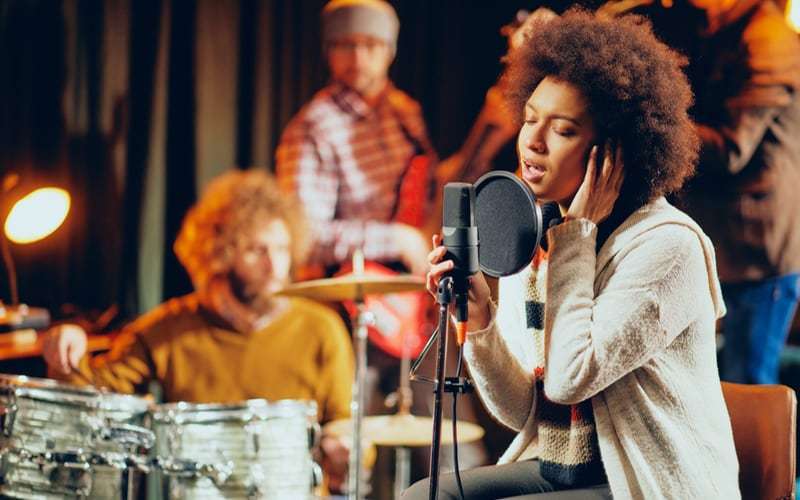Have you ever found yourself singing your heart out in the shower or belting out your favorite song in the car? Singing is a natural human expression that has been around for centuries. But is singing creative? Can it be considered a form of artistic expression?
Many people believe that singing is a creative outlet that allows individuals to express themselves in a unique way. Singing allows you to convey emotions and tell stories through lyrics and melodies. It can also be a way to connect with others and share your experiences with the world.
However, some may argue that singing is not necessarily creative, as it often involves performing pre-existing songs and following a set melody and structure. While this may be true to some extent, singing also allows for improvisation and interpretation, as well as the ability to add personal touches and vocal embellishments to a song.
So, is singing creative? The answer may not be so clear-cut, but it is certainly worth exploring.
Understanding Creativity
Definition of Creativity
Creativity is the ability to come up with new and original ideas or concepts. It involves using one’s imagination to create something unique and innovative. Creativity can be expressed in many different forms, such as art, music, writing, and even problem-solving. It is a fundamental part of human nature, and it has been essential for the development of society and culture.
According to a study by the American Psychological Association, creativity is not just about being different or unique. It is also about being able to produce something that is both valuable and useful. Creativity involves the ability to think outside the box, to see things from a different perspective, and to make connections between seemingly unrelated ideas.
Importance of Creativity
Creativity is essential for personal growth and development. It allows us to express ourselves and to communicate our thoughts and ideas in a meaningful way. It also helps us to solve problems and to find new and innovative solutions to everyday challenges.
In the context of music, creativity is particularly important. Singing, for example, is a form of creative expression that allows individuals to communicate their emotions and feelings through music. It involves using one’s voice to convey a message, to tell a story, or to express oneself in a unique and personal way.
Research has shown that music can have a significant impact on creativity. According to a study by the Greater Good Science Center at UC Berkeley, listening to music can promote more divergent thinking, which is a key element of creativity. Musical training has also been associated with increased imagination and creativity.
Creativity is an essential part of the human experience, and it plays a critical role in personal growth and development. Singing is just one example of how creativity can be expressed through music. By embracing our creative abilities, we can unlock our full potential and achieve great things.
Singing as a Creative Process
Is Singer an Artist?
Singing is a form of art, and singers are artists who use their voice to express themselves. Singing is a creative process that requires a combination of technical skill and artistic expression. It’s not just about hitting the right notes, but also about conveying emotion and telling a story through song.
Singers are artists who use their voice as their instrument to create something unique and beautiful.
How Singing Engages Creativity
Singing engages creativity in many ways. First, singers need to be creative in their interpretation of a song. They need to find their own unique way of expressing the lyrics and melody of a song.
Second, singers need to be creative in their use of their voice. They need to experiment with different tones, dynamics, and phrasing to create a unique sound.
Finally, singers need to be creative in their performance. They need to engage the audience and create a memorable experience.
Exploring Creative Elements in Singing
There are several creative elements in singing that make it a unique form of art. These elements include melody, harmony, rhythm, lyrics, and phrasing.
Singers need to be creative in their use of these elements to create a unique sound. They need to experiment with different melodies, harmonies, and rhythms to create a unique sound. They also need to be creative in their use of lyrics and phrasing to convey emotion and tell a story.
Taking Risks and Making Mistakes in Singing
Singing is a creative process that requires taking risks and making mistakes. Singers need to be willing to try new things and experiment with their voice. They need to be willing to take risks and make mistakes in order to grow as an artist.
Making mistakes is a natural part of the creative process, and singers need to embrace it as an opportunity to learn and grow.

The Role of Emotion in Singing
When it comes to singing, it’s not just about hitting the right notes or having a good voice. One of the most important aspects of singing is the ability to connect with your audience and convey emotions through your voice. Emotion is the key to making your singing creative and engaging.
Through expression, a singer can use their voice to convey different emotions such as happiness, sadness, anger, or love. When a singer expresses themselves through their voice, they can convey the intended meaning and emotions of the lyrics, which can create a deeper and more meaningful connection with the audience.
To sing with emotion, you need to let your feelings and expression shine through. This means being vulnerable and allowing yourself to feel the emotions of the song. It’s important to understand the lyrics and the story behind the song so that you can convey the emotions effectively.
Body language is also an important aspect of singing with emotion. Your body language can help convey the emotions of the song and make your performance more engaging. For example, if you’re singing a sad song, you might use a slower tempo and more subdued body language to convey the emotion.
In addition to body language, dynamics can also play a role in conveying emotion. Dynamics refer to the volume and intensity of your singing. By controlling the dynamics of your voice, you can create a more powerful and emotional performance. Vibrato, riffs, and runs can also add to the emotional impact of your singing.
Creativity and Singing Styles
When it comes to singing, there is no doubt that creativity plays a significant role. Singing is an art form that allows you to express yourself in a unique way. But is singing a skill or a talent? Is it okay to copy other artists? Let’s explore these questions and more in this section.
Is Singing a Skill or a Talent?
Singing is both a skill and a talent. Some people are born with a natural ability to sing, but that doesn’t mean they don’t need to work on their technique.
Singing requires proper breathing, pitch control, and vocal range, which can all be developed through practice and training.
Is it Okay to Copy Other Artists?
Copying other artists is a common practice in the music industry. However, it’s important to find a balance between imitation and innovation. While it’s okay to draw inspiration from other singers, you should strive to develop your own unique style. Don’t be afraid to experiment and take risks with your singing.
Different Singing Styles
There are various singing styles to choose from, including pop, rock, classical, jazz, and more. Each style has its own unique characteristics and requires different techniques. For example, pop singing often involves belting and using a microphone, while classical singing focuses on proper breath support and projection.
Innovation in Singing Styles
Innovation is essential to keep singing styles fresh and exciting. Many artists experiment with different genres and fuse them together to create something new. For example, some singers combine pop and country music to create a unique sound. Others incorporate elements of electronic music into their singing.
It’s okay to draw inspiration from other artists. However, it’s important to develop your own unique style and experiment with different genres to keep things fresh. Whether you’re a seasoned professional or a beginner, there’s always room for creativity in singing.
The Impact of Creativity on Singing Performance
When it comes to singing, creativity plays a significant role in performance. Singing is an art form that requires not only technical skills but also creativity and imagination.
Creativity Enhances Expression
Creativity allows singers to express themselves in unique and innovative ways. By adding their own personal touch to a song, singers can create a performance that is both memorable and engaging.
Creativity in singing can take many forms, such as improvisation, embellishments, and variations in phrasing. These creative elements can help convey the emotions and meaning of a song, making it more relatable to the audience.
Creativity Boosts Confidence
Creativity in singing can also help boost a singer’s confidence. When a singer is able to add their own personal touch to a song, they feel a sense of ownership over their performance. This ownership can lead to increased confidence and a stronger connection to the music.
Singers who are confident in their abilities are more likely to take risks and experiment with their performance, which can lead to more creative and engaging performances.
Creativity Improves Musicianship
Creativity in singing can also lead to improved musicianship. By experimenting with different vocal techniques and styles, singers can expand their range and improve their overall vocal abilities. Creativity can also help singers develop a better understanding of music theory and composition, which can lead to more complex and interesting performances.
By embracing creativity, singers can create performances that are memorable, engaging, and truly their own.

